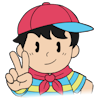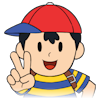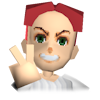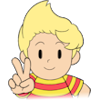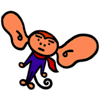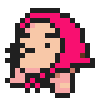Super Smash Bros.
by: Kody NOKOLO on 2/23/2023
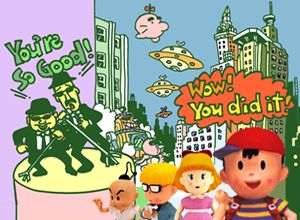
Super Smash Bros. is a series originally created by Masahiro Sakurai and HAL Laboratory for the Nintendo 64 on January 21st, 1999. The series has continued on every Nintendo home console platform since then under the direction of Sakurai, with its most recent release being Super Smash Bros. Ultimate on the Nintendo Switch. The game features a crossover of various well-known Nintendo and gaming industry characters who are playable in a fighting game format that works more like the game Ohajiki than a traditional fighting game.
In the first two games, Super Smash Bros. and Super Smash Bros. Melee, Ness was featured as a playable fighter. Two MOTHER 2 stages, Onett and Fourside, are also playable in Melee with most music tracks arranged by Kirby series composer Hirokazu Ando and one Onett music track coincidentally arranged by Shogo Sakai, who was composing for MOTHER 64 before it was canceled and who returned years later to finish the MOTHER 3 soundtrack for its GBA release. According to Masahiro Sakurai, Lucas was considered to replace Ness in Melee before MOTHER 64 was canceled. Other MOTHER characters were featured as trophies and items in Melee, like Paula and Mr. Saturn respectively.
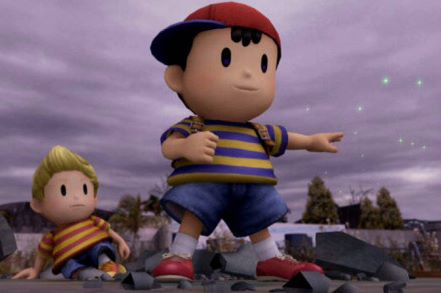
Without knowing MOTHER 3 was not receiving a localization outside of Japan, Sakurai later introduced Lucas as a fighter with his own stage, New Pork City, in Super Smash Bros. Brawl. Onett returned to the game from Melee, but Fourside did not. Brawl also introduced the Subspace Emissary story mode that features Ness and Lucas interacting with other Nintendo characters. Two bosses from MOTHER 3, the King Statue and Porky Minch in his spider mech, both appear as enemies in the story. Another new item, the Franklin Badge, also appeared in the game, along with stickers that feature clay models and sprites from all of the MOTHER series. A new type of item in Brawl, the Assist Trophy, has a chance to release Jeff, who can shoot bottle rockets at opponents.
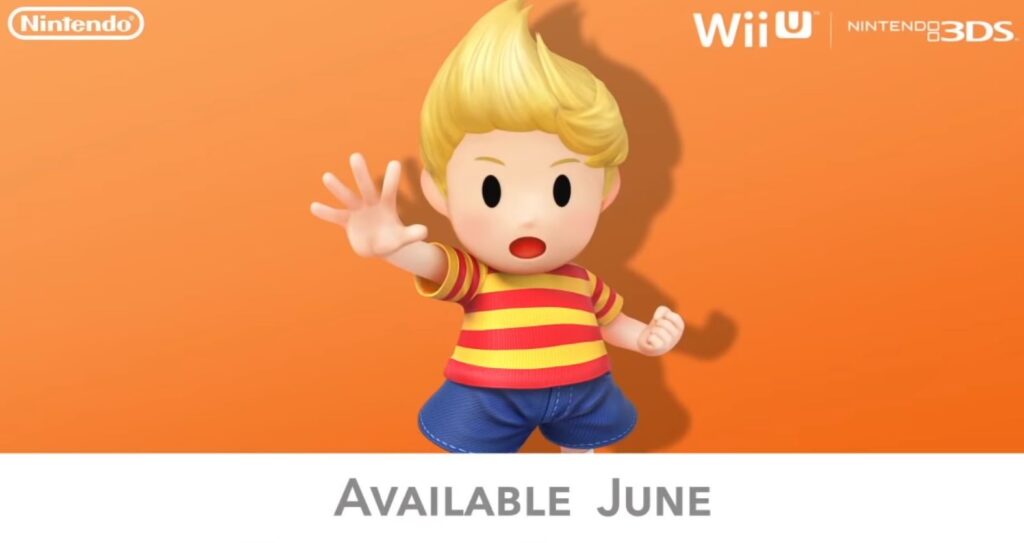
The next games in the series, Super Smash Bros. for 3DS / Wii U only featured Ness with only the Onett stage returning in Super Smash Bros. for Wii U, but with new arrangements of series music to play on it. In Super Smash Bros. for 3DS, a new MOTHER series stage was added however, Magicant from the first MOTHER, including arrangements from Final Fantasy composer Yoko Shimomura and Splatoon composer Toru Minegishi. A Flying Man appears in the form of an alliable assist on this stage along with many scenes and objects from the first two MOTHER games in the foreground and background. Another assist trophy character from the series was also added, Starman. The second DLC fighter announced for the games was Lucas, and in Satoru Iwata’s last Nintendo Direct appearance on April 1st, 2015, he explicitly mentions “the requests” while introducing Lucas. Ness and Lucas also were released as merchandise shortly after Smash for in the forms of amiibo figures that can be used with Smash and other Nintendo games.
Ness and Lucas both return with every past character in the Smash Bros. series for Super Smash Bros. Ultimate. The game also finally features the return and remake of every MOTHER stage and all music with a couple of new arrangements for Fourside and Magicant by composer Matoi Sakuraba. A new item from the series was added, the Ramblin’ Evil Mushroom, which inverts fighter controls. Ness and Lucas also received aesthetic upgrades that use visual PSI effects from MOTHER 2 and 3, and their Final Smash attacks now feature a few members of their parties: Paula and Poo for Ness, and Kumatora and Boney for Lucas. This also marks the first time that Kumatora and Boney have had an official depiction outside of their sprites, due to the lack of key art for MOTHER 3 outside of sprites from the game. New collectible items called “Spirits” also featured clay and pixel art of MOTHER characters, like the Stickers in Brawl. These Spirits each featured battles that reference events in each MOTHER game. Online events and tournaments featuring MOTHER characters and spirits also appeared in Ultimate.

Although Ness has always returned alongside every other character from the original Super Smash Bros., Masahiro Sakurai has shown a fondness for the series outside of just bringing Ness back for consistency, and although MOTHER may not be the most popular of all the series featured in Smash, Sakurai has repeatedly given it a spotlight that is on-par with Nintendo’s active series. Instead of any other series that could have had it, time was allocated to MOTHER, an ended series, to keep giving its characters updates and support as late as Smash Ultimate, and it demonstrates a fondness that is widely known to have spurred people into learning more about the series ever since the first Smash. The notice that Smash has given to MOTHER has driven interest in the series possibly more than the games themselves for some people, and it’s thanks to Masahiro Sakurai and every Smash developer for giving MOTHER the recognition that ultimately drove the fandom to arrive at where it is today.



